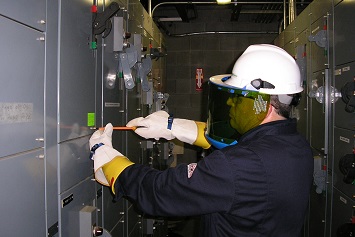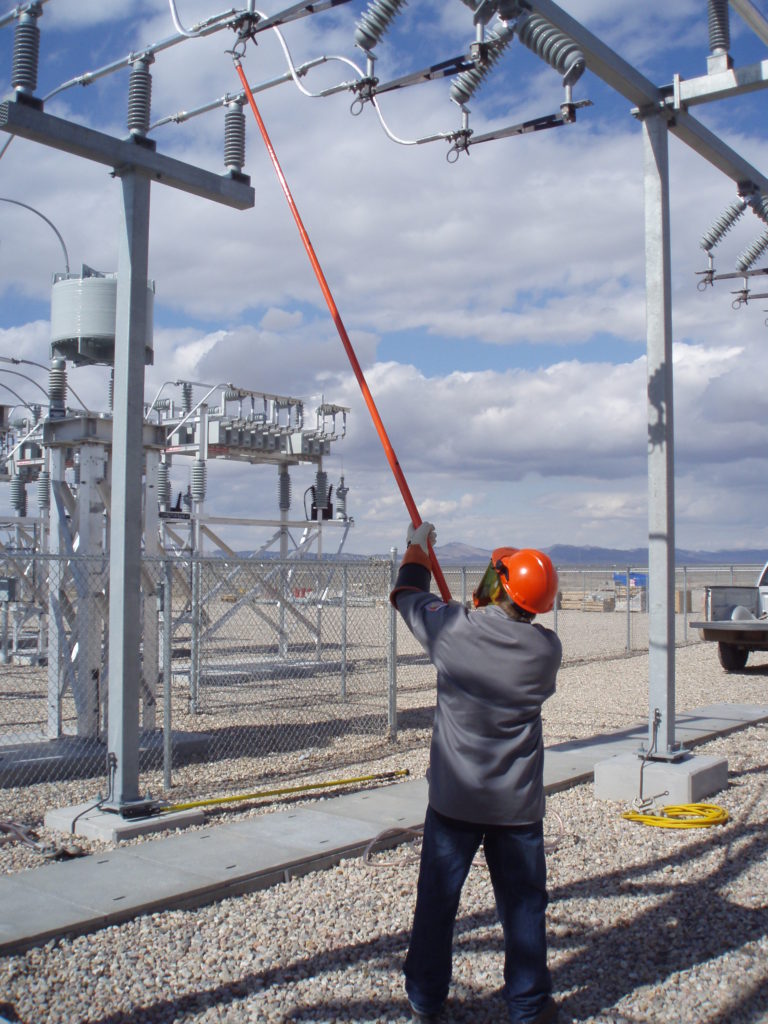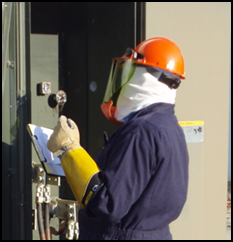The Occupational Safety and Health Administration (OSHA) has increased compliance activities related to electrical safety regulations and standards over the past few years. This began with the heightened interest in arc flash hazards related to the 2000 National Fire Protection Association (NFPA) 70E standard and became more active after the 2004 edition was published.

On February 14, 2007, OSHA updated a portion of Subpart S (1910.302-308), and soon after, compliance officers attended training on electrical regulations and associated NFPA 70E standards. In 2009, the NFPA published a more polished, clearer 70E standard and continued with the 2012 edition, covering shock and arc flash hazards for direct current (DC) systems. Now, the 2015 and 2018 editions have made some significant changes to clarify electrical safety, with added emphasis on risk assessment, which goes beyond identifying the hazards.
A major part of OSHA’s effort continues to focus on employee protection, first by eliminating the hazard through proper lockout/tagout and other administrative controls or barriers and second by the use of personal protective equipment (PPE) for both shock and arc flash hazards. The interpretation on the use of PPE, along with the definition of “qualified worker,” is now more clear than ever. PPE is required to protect qualified workers from electrical hazards that have not been mitigated by elimination or engineering controls and may be effectively implemented through an effective written electrical safety program.
Qualified Workers
Many companies hire licensed electricians to fill their maintenance needs assuming that these workers are qualified. This may be true, but more often than not, the electricians are not safety qualified. On the flip side, a qualified electrical worker does not need to hold an electrician license or similar certification. Another misconception involves a maintenance person performing regular electrical testing to ensure the equipment is functioning properly—some feel this person would not be considered qualified, so rules for qualified workers related to the level of training are not required.
In both cases, there are minimum requirements set forth by OSHA. A qualified worker is defined by OSHA in 2007 and NFPA 70E in 2015 as “One who has received training in and has demonstrated skills and knowledge in the construction and operation of electric equipment and installations and the hazards involved.” The term that is critical in the development of an effective training program and that requires regular employee observation is the word “demonstrated.” OSHA will look for documentation to determine if your qualified employees have demonstrated their skills and knowledge, especially if it identified a deficiency in work practices or procedures during its annual observation.
Now that the definition of qualified worker is settled, here is a three-part process for using NFPA 70E to protect workers.
Part 1: Assessing the Hazards
There are two levels of assessment to consider, including:
- A general hazard assessment for PPE requirements as outlined in 29 CFR 1910.132, and
- A prework personal hazard assessment, or “job briefing.”
Qualified workers must also have the skills and techniques necessary to distinguish exposed live parts from other parts of electric equipment; determine the nominal voltage of exposed live parts; know the clearance distances for the various nominal voltages (i.e., NFPA restricted approach boundary); and understand several specific special precautions related to capacitors, current transformers (CTs), lighting requirements, gradient potential (medium voltage or over 600 volts (V)), PPE requirements, and emergency response related to electrical contacts. These issues are part of qualified workers’ daily work and require that an assessment be done before beginning work, whether they are electricians, facilities maintenance workers, or production line workers performing electrical tests. The level of this “job briefing” depends on if the work is routine or nonroutine and the complexity or level of risk of injury to the employee. With this requirement, each qualified worker should determine the shock hazard by identifying the exposure to electrical parts, the nominal voltage of those parts, and shock PPE required for adequate protection within the determined minimum approach (or NFPA 70E restricted approach) boundary. Protection from arc flash/blast hazards is determined by examining arc flash labels or by referring to the company’s written electrical safety program criteria wherein the arc flash hazard level has been determined by the employer.
A PPE assessment shall be performed by all employers. Electrical PPE requirements are broad and do not contain specific PPE particularly related to arc flash hazards. OSHA will cite companies based on noncompliance with 29 CFR 1910.132 or go to the Subpart S, 1910.335(a)(1), or 1910.269 for work related to generation, transmission, or distribution of electricity (usually associated with medium and high voltage). To cite specific electrical PPE requirements, OSHA has cited NFPA 70E under the General Duty Clause.

Part 2: Shock Protection
During the job briefing hazard assessment, the nominal voltage is identified. This will provide information needed to determine the shock prevention measures. First, try to completely de-energize the enclosure before opening doors or removing covers. If this is infeasible, then some level of PPE will be required before removing covers, depending on the voltage.
The most common voltages in the United States are 120/240 V single phase and 120/208 and 277/480 V three phase; in Canada, the 575 V is the most common three-phase power system. It’s important to know that any voltage over 50 can kill. To protect against shock hazards, some basic equipment should be available and used. Remember that the goal is to increase the resistance through the circuit, including the body, where a contact could cause electricity to flow. Clean air is a great insulator, so distance and nonconductive barriers are best to avoid contact and, in some cases, eliminate the need for electrical PPE.
If PPE is required, head-to-toe protective equipment would include an electrical-related hard hat Type 1 Class E and/or Type 2 Class G; rubber insulated gloves; and electrical hazard (EH)-rated boots (suggested only as a best practice). For 480- and 575-V work, the minimum approach distance (MAD) is 12 inches (in.) from uninsulated body parts. OSHA explains this MAD as “arms reach plus 12,” so rubber gloves are required before opening the door or removing a cover to expose parts. This is required even if de-energized because it must be tested to ensure it is de-energized. Class 0, 14-in. rubber gloves with leather protectors are the best option because Class 00 gloves are rated for 500 V, and because utilities are allowed +/- 5% on the voltage provided, 480-V systems may exceed 500 V. The length is important because 12-in. rubber gloves have a rolled cuff, so the lower arm will be within the minimum approach boundary when testing using a meter. Rubber gloves are required to be air tested before each day’s use and lab tested at least every 6 months. To make the testing easier, have one person in charge of all rubber glove testing. Ask your test lab to stock your second pair of gloves, then test and ship them in 5 months so that employees only need to change them when received and ship them back. It may also help to have two different colors of gloves. As an example, yellow gloves could be for summer, and red gloves could be for winter. This will help ensure that the test has been done within the defined time frame. Thin cotton liners are nice to soak up sweat or if gloves are shared (i.e., in test or assembly areas with shift workers). Leather protectors should be used to protect the Class 0 rubber gloves (required for Class 1–4 gloves). A medium voltage requires higher-rated gloves, in addition to the use of hot sticks and grounding equipment. This includes some crushers or other large equipment.
Other tools that every electrical worker should have include insulated hand tools, insulated fuse pullers, a portable ground fault circuit interrupter (GFCI) cord or pigtail for cord and plug tools, rubber barrier material, and an Underwriters Laboratory (UL)-listed CAT III and/or CAT IV test meter.

Part 3: Arc Flash Protection
Arc flash and blast hazards present more of a challenge. Motor control centers are one of the most common places for arc flash incidences. As discussed above, a hazard assessment is required by all employers to determine PPE. The level of hazard related to the arc flash depends on a few variables:
- The available bolted fault current supplied from the source,
- The clearing time (time at which a breaker opens or a fuse blows), and
- The impedance between the point of the flash and the source.
How these are determined can vary. Some companies contact the utility to determine fault current and then use the NFPA 70E tables if within the fault current specified in the notes. This may meet minimum OSHA requirements for PPE assessment, but it is not the best way to decide on protection levels for your employees. Often, this method results in PPE overkill, but occasionally, it’s not enough.
The better approach is to calculate the incident energy levels in calories per square centimeters (cal/cm²) and determine boundaries at which the incident energy level drops to 1.2 cal/cm²—this is called the flash protection boundary. Anything above this level will cause a second-degree burn to bare skin. The study will also determine exactly what the cal/cm² is at the working distance (typically 18 in. for 480- or 575-V work). By doing this, you’ll know precisely what level to protect both qualified employees and nonqualified employees. You must require your qualified employees to wear arc-rated clothing that has a rating in cal/cm² that is greater than or equal to the calculated level at the working distance, and barricade the nonqualified workers at the arc flash boundary if it exceeds the limited approach boundary (i.e., the shock boundary allows qualified workers only). This is in addition to the shock protection required in Part 2 above.
The simplest way to comply with arc-rated clothing requirements is to have qualified workers wear 8 cal/cm² for day-to-day work (a less effective but functional option is coveralls of the same rating over cotton clothing) and wear an arc shield for any work for which the incident energy was determined to be less than 8 cal/cm². An arc-rated balaclava hood is required for added face and neck protection when the calculated hazard exceeds 4 cal/cm². For work with higher identified hazard levels, often related to main switchgear; large, medium-voltage equipment; motor control centers; and a lengthy high-amperage bus duct, a 40 cal/cm² suit should be worn. Any work on equipment for which the hazard level is greater requires the equipment to be de-energized or the hazard engineered out via remote working procedures.

Other PPE related to arc flash or blast includes plastic-rimmed safety glasses and arc-rated ear plugs. Qualified workers should also install “DANGER” tape or a similar barricade at the flash protection boundary to protect nonqualified employees from arc flash hazards.
Summary
So, that’s it! Have a written program to outline all possible electrical hazards and procedures required to effectively eliminate or engineer them out. NFPA 70E also now requires that the host employer instruct all contractors of the hazard levels and document this communication.
If eliminating the hazard is not feasible, then protecting employees with proper PPE is critical for both employees and contracted employees. The PPE required includes rubber gloves, EH-rated boots (suggested), a hard hat with arc shield, plastic-rimmed glasses, ear plugs, and arc-rated clothing to the level of the hazard. It doesn’t have to be a stressful process.
Train all qualified workers, which may include heating, ventilation, and air conditioning (HVAC); maintenance; electricians; test technicians; and design engineers. Remember that ignorance of these regulations will not work as a defense against an OSHA citation or when answering questions in a tort case following an electrocution. To be defensible, companies must develop a written program based on a hazard assessment, train employees, verify the program works, and enforce the program.
 Lee Marchessault, CUSA, CUSP, is the President of Workplace Safety Solutions, Inc. He has been working in the electrical industry since 1978. Feel free to send questions to lee@workplacesafetysolutions.com. Lee Marchessault, CUSA, CUSP, is the President of Workplace Safety Solutions, Inc. He has been working in the electrical industry since 1978. Feel free to send questions to lee@workplacesafetysolutions.com.
Join Marchessault for his upcoming webinar, Arc Flash Hazards: Using NFPA 70E to Protect Employees and Meet OSHA Electrical Safety Requirements, taking place Tuesday, February 4, 2020, from 1:30 p.m. to 3:00 p.m. Eastern time (10:30 a.m. to 12:00 p.m. Pacific). By attending this informative session, you will gain important insight into how to improve your organization’s electrical safety program, including how to:
|
